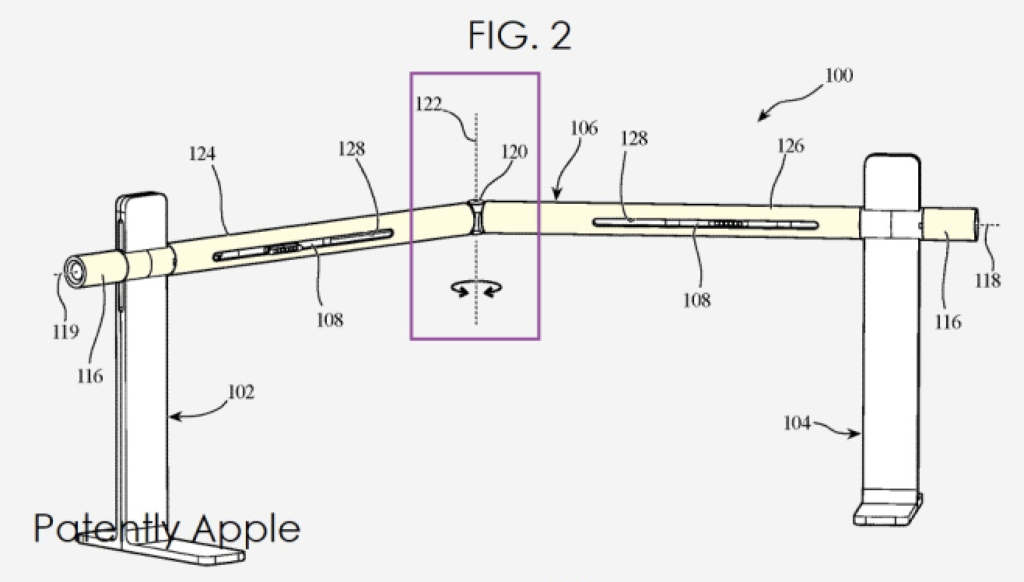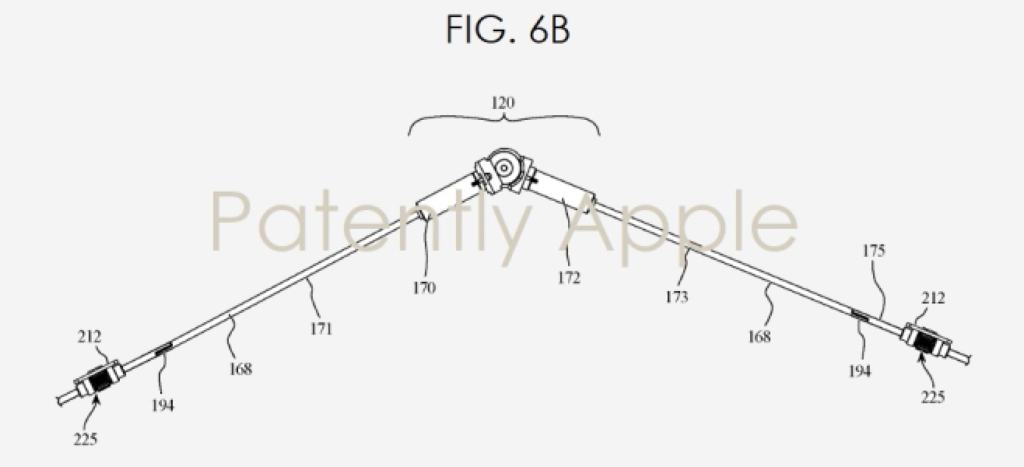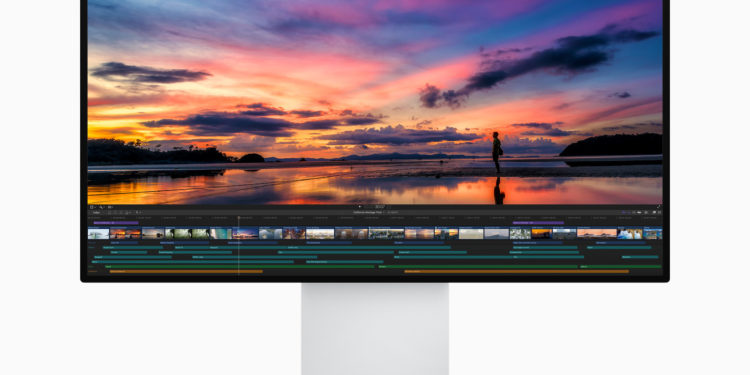Apple introduced the Pro Display XDR 2019. The monitor is intended for professional users. Now a patent has been discovered that describes a stand for two of these monitors.
The Pro Display XDR is available with standard glass or nano-texture glass. The display can cost 5,499 euros or 6,499 euros. There is also the choice between two stands. The Pro Stand allows you to control the height, tilt and orientation and costs around 1,099 euros, while the normal VESA mount adapter only costs 219 euros. However, Apple also seems to be working on a so-called Dual Pro Stand, as a patent confirms. This is intended to appeal to users who use two of these monitors and need maximum flexibility - the reported Patently Apple. The report states:
Pro Display XDR: The Dual Pro Stand would be a passable solution

Apple's invention involves a multi-screen stand. In their patent, they note that when using multiple screens in a workspace, the screens are generally supported by several different individual stands or by independently movable arms extending from a single support point.
Apple also points out that screens set up in this way are either difficult to align correctly with each other or that they cannot be adjusted individually. This is where the Dual Pro Stand comes in.

These individual stands or arms take up unnecessary space, are often aesthetically pleasing, overcomplicated, and have inefficient, redundant mechanisms. When multiple screens are used on independent arms, they can be difficult to align smoothly and precisely because the counterweights and arm lengths are inconsistent. When multiple screens are used on a single support, they cannot be effectively aligned around a vertical axis relative to each other.
Apple Patent: It Could Remain an Idea

Apple's new Dual Pro Stand for two XDR monitors is a continuous piece that allows both screens to have "vertical, horizontal and intermediate degrees of freedom of rotation."
The stand may have two supports attached to end portions of the stand (e.g., further apart than the attachment points of the outermost displays) and connected by a substantially horizontal support bar. The support bar is vertically adjustable relative to the supports by synchronized adjustment of the slide assemblies connected to each of the supports. The supports may be referred to as vertical supports or vertical support feet. The vertical position of the support bar is simultaneously adjustable relative to each of the supports by a connecting bar extending the length of the support bar.
Basically, the idea certainly doesn't sound bad. But as with any patent, the same applies here - in the end, the whole thing could remain just an idea. (Image: Apple)





